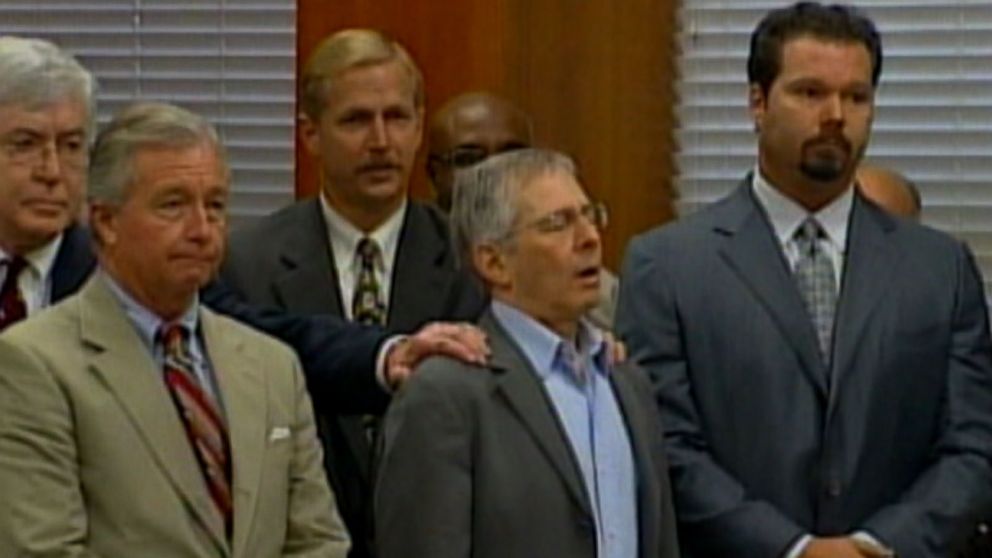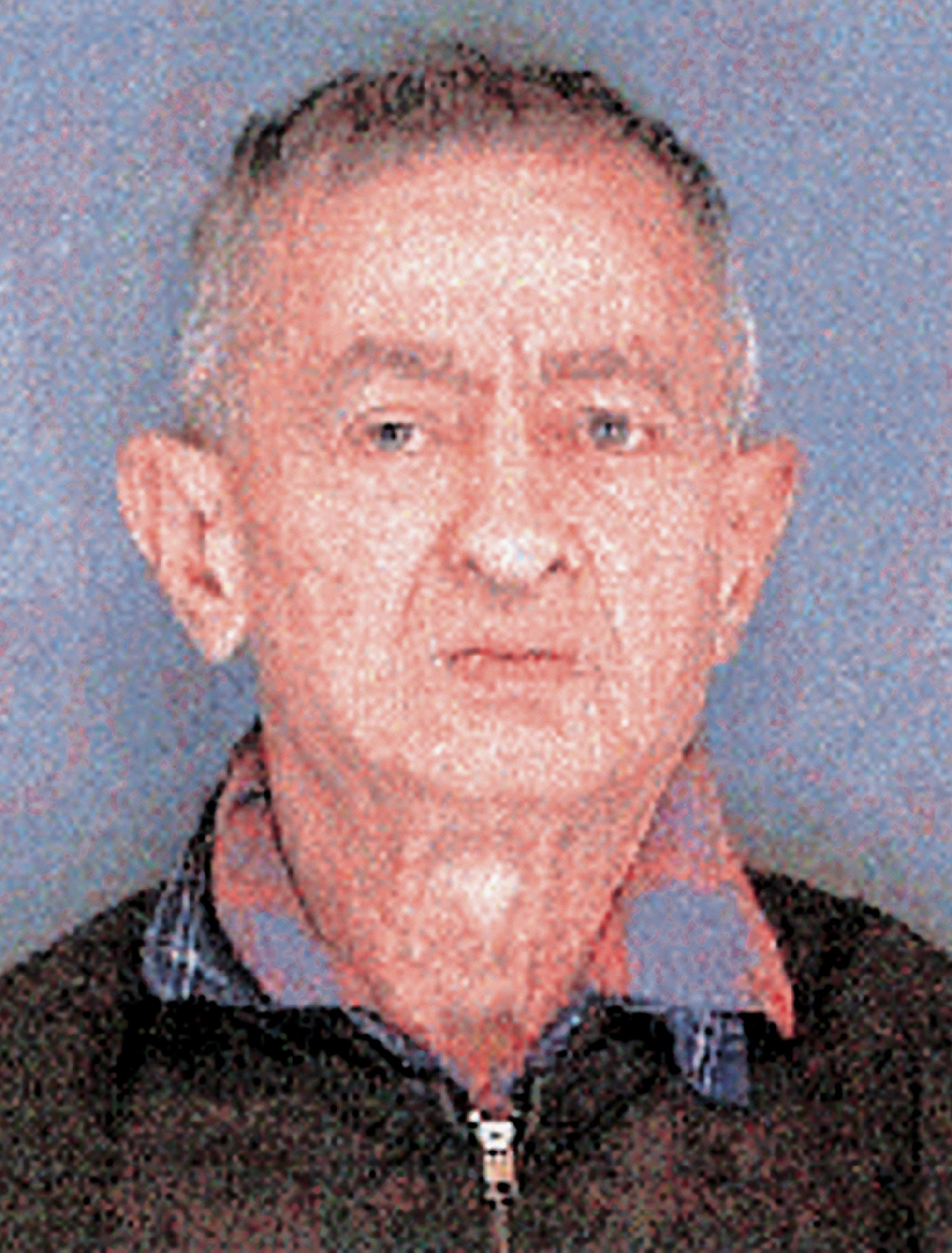Why Robert Durst Killed His Neighbor, In His Own Words
He was acquitted of murdering his neighbor in 2003.
— -- Real estate heir Robert Durst is now facing new murder charges stemming from the unsolved mystery surrounding the 2000 shooting death of his friend.
But this isn't the first time that Durst has been connected to a killing. He was tried and acquitted after his neighbor in Galveston, Texas, was found dismembered and floating in Galveston Bay.
His route from a role at his family's New York real estate company to living as a mute woman in a $300-a-month apartment in Galveston was revealed during the trial, where he took the stand in a Texas courtroom to explain himself.
The testimony gives some insight into the seemingly bizarre justifications that he gave in killing his neighbor, Morris Black -- enough to convince a jury that it was self defense and to acquit.
How Did He Kill Morris Black?
Durst told the court that on Sept. 28, 2001, he arrived at his apartment to find his neighbor sitting inside without an invitation. Black, who had a key to Durst's apartment, was watching television when Durst arrived. Durst said Black allegedly had a "kind of look on his face" that he took to mean that "he was angry with me."
While testifying, Durst gave no explanation as to why Black would have been mad at him, but he said that he immediately feared that Black had taken the gun that Durst had stored in his oven.
When Durst asked Black where the gun was, Black allegedly stood up and pointed the gun at Dunst.
"I was concerned that Morris was going to shoot the gun, most likely at my face," Durst testified, according to a court transcript.
Durst said he grabbed for the barrel of the gun and the two men tripped and fell to the ground. During the fall, Durst claimed the gun went off -- even though he never touched the trigger.
"We never really wrestled. I went to pull the gun and the gun didn't move. He moved and the two of us fell back," Durst testified.
"I pushed myself up on my left hand and I saw blood on the side of Morris' nose," Durst added.

Though many of Black's body parts were found floating later in Galveston Bay, his head was never discovered. As a result, police were never able to confirm where exactly Black was shot. Prosecutors argued that the shooting was the cause of death and the dismemberment took place post mortem.
What Did Durst Do Once He Realized Black Was Dead?
Durst claimed in his testimony that he ran upstairs to try to get help from a neighbor and have someone call 911. When no one answered the door, he said he left the building and went to another neighbor.
"I wanted to get a doctor. All I could think of was getting a doctor," he said in court.
When he came back to his apartment, he saw the body and started to clean up.
"I walked around his Morris' body. I saw how his head was in kind of a pool of blood right around his head. I walked around his body and I went into the bathroom to wash my hands," Durst testified.

If It Was Self Defense, Why Didn't He Call Police?
Durst told the court that after cleaning himself up, he walked to a nearby seawall and thought about his next steps, telling himself "you got to get yourself under control."
"Well, I kept going over the situation in my mind that Morris was shot in the face with my gun in my apartment, and I had rented this apartment disguised as a woman," Durst said. "And the police would -- I mean, even before I got to the point where the police were immediately going to look into who am I, Robert Durst, who happened to rent this apartment as Dorothy Ciner and find out that I am this wealthy guy who rented the apartment well below his means and there is all this media attention on him back in New York. I just didn't think I would be believed. I didn't think they would believe me."
How Did He Get Rid of the Body?
Once he got back to his apartment building, Durst said he "intended to roll Morris Black's body up ... and carry it out of the building" but realized later that "there was no way I could lift it."
From there, he decided to dismember his former friend.
"I had somehow got it into my mind that Morris Black had -- there were a bunch of tools in his apartment, several saws and an ax and hammers and other stuff like that," Durst testified. "And I got this idea that the body rolled up in the drop cloth, that I was going to cut it in half."
He then detailed in his testimony how he went to a hardware store to get plastic garbage bags and stuffed them with the dismembered body parts before driving to Galveston Bay and ditching the bags.
Why He Pretended to Be Mute While Living in Texas
Durst acted as a mute woman inside the two-story home where he rented an apartment in Galveston. He wore a wig when he left his home before taking it off a few blocks away, often visiting a library to see if there were more articles written about him in New York.
"My voice is very distinctive," said Durst. "People recognize my voice over the phone after having spoken to me for years. I just couldn't imagine trying to make my voice sound like a woman's."
Durst Talked to Himself
"I can remember it from elementary school," he testified. "I had great, elaborate conversations with myself, wave my hands, and talk out loud. People can hear me 23 feet away."
Durst said people frequently confronted him when he talked to himself because they thought he was speaking to them.
"I have had people confront me and say, 'Well, if you want to say something to me, say something to me' because I will just sort of look straight ahead and people will think I am staring at them and waving my hands and making facial expressions and talking to them," he testified.
Durst Regularly Used Marijuana
Durst attended UCLA for graduate school, where he said he discovered marijuana.
"It became a lifelong addiction or friend or whatever," he testified, adding that he used the drug "essentially daily" from his college years to November of 2001, when he was arrested for stealing a sandwich while in Pennsylvania.
He also testified that he regularly missed work or arrived late because of his marijuana and alcohol use.
How Was He Caught?
A little boy who was fishing with his father in Galveston Bay was the one to first discover the floating trash bags, and they were the ones to spot Black's limb-less torso, said the lead investigator Cody Cazalas.
The body was not traced back to Black using physical identification, however. Instead, there was a piece of a newspaper that had a sticker with the delivery address found inside one of the trash bags, and police found that Black was one of the four residents in the building. They did not immediately connect the case to Durst because he was not listed as a tenant since he rented the apartment under the name of a female former classmate, Dorothy Ciner.
It was only when they searched the communal trash in the back of the building, Cazalas said, that they found the name Robert Durst on a receipt from a local optician, which they used to determine that Durst was actually Ciner.
Cazalas said that in addition to the receipt, the gun used to shoot Black was a .22-caliber pistol registered in Durst's name.
They ultimately apprehended Durst when he returned to the same eyeglass shop from the receipt and the owner called the police. He was then arrested though he fled when he did not appear at a bond hearing. He was found later in Pennsylvania.
One of the remaining mysteries in the case was the whereabouts of Black's head.
"He [Durst] panicked and cut one of the bags open and took the head with him," Cazalas told ABC News of his theory of how Durst disposed of the body parts.
Why Was He In Texas?
Durst, now 71, grew up the son of a wealthy New York family but he fled the region following the disappearance of his wife Kathie in 1982. She has never been found, but when investigators reopened the case in 2000, they were set to interview Susan Berman.
Days before Berman's scheduled meeting with investigators, she was found dead in her Los Angeles home.
The Durst saga was the subject of a 2010 film, and Durst later contacted the director of the movie and arranged several interviews with him, which later became the basis for the HBO series, "The Jinx."
In the final episode of the documentary mini-series, Durst was presented with a letter that he wrote to Berman before her death and a letter that was sent to the LAPD telling them that Berman was dead in her home. The handwriting appears very similar and the LAPD now says that it was the key piece of evidence that led to his arrest.
Get real-time updates as this story unfolds. To start, just "star" this story in ABC News' phone app. Download ABC News for iPhone here or ABC News for Android here. To be notified about our live weekend digital reports, tap here.





